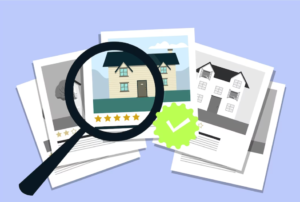Buy To Let Mortgages
Welcome to the comprehensive Buy to Let Mortgages Guide, where we provide landlords with all the essential information they need to navigate the world of property investment and financing. Whether you’re an experienced investor or a first-time landlord, understanding buy to let mortgages is crucial for success in the rental market. This guide will cover the fundamentals of buy to let mortgages, eligibility criteria, application process, tax implications, and investment strategies, all designed to empower you in making informed decisions.
What is Buy to Let Mortgages?

Buy to let mortgages are specifically designed for individuals who wish to purchase a property to rent it out to tenants. Unlike residential mortgages, which are intended for owner-occupiers, buy to let mortgages are tailored to rental properties’ unique needs and risks. These mortgages enable landlords to borrow the necessary funds to purchase an investment property and generate rental income.
Key Features and Benefits of Buy to Let Mortgages
Buy to let mortgages offer several advantages to landlords, including:
- Rental Income: The primary benefit of buy to let mortgages is the opportunity to generate rental income, providing a regular cash flow and contributing to your investment returns.
- Property Appreciation: Over time, rental properties have the potential to appreciate in value, allowing landlords to benefit from capital growth when they decide to sell.
- Portfolio Expansion: Buy to let mortgages enable landlords to build and expand their property portfolios, diversifying their investments and potentially increasing their rental income.
- Tax Deductions: Landlords can deduct various expenses, such as mortgage interest payments, maintenance costs, and letting agent fees, from their rental income, reducing their tax liability.
Understanding the Buy to Let Mortgages Application Process
 To secure buy to let mortgages, landlords must navigate a structured application process, which typically involves the following steps:
To secure buy to let mortgages, landlords must navigate a structured application process, which typically involves the following steps:
- Eligibility Assessment: Lenders evaluate various factors, such as your credit history, income, and existing financial commitments, to determine your eligibility for buy to let mortgages.
- Deposit Requirements: Typically, buy to let mortgages require a higher deposit than residential mortgages, often around 25% of the property’s value. The larger the deposit, the more favourable the interest rates may be.
- Mortgage Affordability: Lenders assess your ability to afford mortgage repayments by considering the potential rental income, your personal income, and any other sources of income you may have.
- Property Valuation: Lenders will require a professional valuation to determine the property’s worth, ensuring it aligns with the purchase price and meets their lending criteria.
- Documentation and Legal Process: Prepare the necessary documentation, including proof of identification, proof of income, and property-related documents, and engage with legal professionals to complete legal requirements.
Types of Buy to Let Mortgages
As part of our buy to let mortgages guide, we want to point out the various types of buy to let mortgages that are available to suit different landlord preferences and financial situations:
- Fixed-Rate Mortgages: With a fixed-rate mortgage, the interest rate remains constant for a specific period, providing stability and predictability in mortgage repayments.
- Tracker Mortgages: Tracker mortgages have interest rates that are tied to an external benchmark, typically the Bank of England’s base rate, plus a set percentage. This means that the interest rate can fluctuate over time.
- Discounted Variable Rate Mortgages: These mortgages offer a discounted interest rate for a fixed period, usually a few years, after which the rate reverts to the lender’s standard variable rate.
- Interest-Only Mortgages: With an interest-only mortgage, landlords only pay the interest charged on the loan each month. The capital must be repaid at the end of the mortgage term.
Tax Implications for Buy to Let Landlords
Understanding the tax implications associated with buy to let properties is crucial for landlords. Some key considerations include:
- Rental Income Tax: Landlords must pay income tax on their rental profits. Tax rates depend on the landlord’s total income and can be subject to changes in legislation.
- Capital Gains Tax: If a landlord sells a rental property at a profit, they may be liable to pay capital gains tax on the gain. Certain reliefs and allowances may apply.

- Stamp Duty Land Tax (SDLT): When purchasing a buy to let property, landlords must pay SDLT. Higher rates of SDLT apply to additional residential properties, including buy to let properties.
- Incorporation and Limited Company Structure: Some landlords choose to operate their rental properties through a limited company to benefit from potentially lower tax rates and other financial advantages.
Buy to Let Investment Strategies
Successful buy to let landlords often adopt specific investment strategies to maximise returns. Here are a few popular approaches:
- Long-Term Rental: Renting out properties on long-term leases to tenants seeking stable accommodation.
- Short-Term and Holiday Rentals: Capitalising on the growing popularity of platforms such as Airbnb and offering properties for short stays or holiday rentals.
- House Flipping: Purchasing properties, renovating them, and selling them for a profit in a relatively short period.
- Multi-Unit and HMO Investments: Investing in properties with multiple units or converting properties into houses in multiple occupations (HMOs) to accommodate more tenants and increase rental income.
Risks and Challenges in Buy to Let Mortgages

While buy to let investments can be lucrative, landlords must be aware of potential risks and challenges, including:
- Economic Factors and Market Volatility: Economic changes, interest rates, and property market conditions can impact rental demand and property values.
- Property Vacancy and Tenant Management: Landlords may experience periods of property vacancy, affecting rental income. Effective tenant management is essential to ensure consistent occupancy and rent payment.
- Interest Rate Changes and Mortgage Affordability: If interest rates rise, mortgage repayments may increase, impacting profitability. It is crucial to consider potential interest rate fluctuations when assessing mortgage affordability.
- Regulatory Changes and Policy Impact: Legislative changes, such as new tax regulations or landlord licensing requirements, can affect profitability and operational processes.
Comparison: Interest-Only Mortgages versus Repayment Mortgages
Astute landlords favour interest-only mortgages due to the advantage of retaining a larger portion of rental income. They would have known that by understanding the pros and cons of buy to let mortgages. With this type of mortgage, landlords only pay the interest on their loan, allowing them to keep more of the rental proceeds.
The majority of landlords opt for interest-only mortgages for this reason. At the end of the mortgage term, the remaining capital is typically repaid, often through the sale of the property. However, it’s important to consider the associated risk. If property prices decline significantly, landlords are still obligated to repay the bank the borrowed amount.
For example, if a property is purchased for £100,000 with a mortgage of £75,000, the landlord would need to repay the lender the £75,000 borrowed and any applicable fees outlined in the mortgage terms. While it’s unlikely that the property’s value would depreciate to that extent, it’s essential to be aware of the potential risk involved.
On the other hand, with a repayment mortgage, landlords simultaneously pay back the interest and the loan amount. Consequently, the monthly mortgage payments are higher than those of an interest-only mortgage. However, the property is owned outright at the end of the mortgage term.
Landlords with extensive portfolios may choose to diversify their mortgage types. For instance, a landlord with ten properties might opt for interest-only mortgages on eight properties while selecting repayment mortgages for the remaining two. This strategy allows for a balance between lower monthly payments and the long-term goal of outright property ownership.
Understanding the pros and cons of buy to let mortgages
Advantages of buy to let mortgages
Property investment is popular for many investors seeking to enhance their returns. While it’s important to consider both the pros and cons, here are some of the advantages associated with buy to let ownership:
- Capital Gain: Over the long term, the property has historically shown an increase in value, offering the potential for capital appreciation.
- Income Generation: Rent from your property can provide an additional income stream. However, it’s essential to consider ongoing property costs and calculate the rental yield to assess the return on investment.
- High Demand: The rental market is currently robust, with high demand due to factors such as limited affordable housing and stricter mortgage underwriting criteria. Renting has become a popular alternative for many individuals and families.
- Diversification: Property investment allows for diversifying the investment portfolio, spreading risk across different assets and potentially increasing overall stability.
- Better Returns: With historically low-interest rates, many savers have turned to property investment as an alternative, seeking better returns on their capital.
- Flexibility: Recent tax changes have led to the rise of limited company buy to let ownership, providing greater flexibility in structuring and managing property portfolios. Lenders now offer a wider range of products for limited company buy to let mortgages, enhancing investment options.
Disadvantages of buy to let mortgages

While investing in buy to let properties can yield positive outcomes, it’s important to be aware of the potential drawbacks. Here are some of the disadvantages:
- Increased Stamp Duty: The government introduced a 3% surcharge on additional property purchases, including buy to let properties, potentially increasing the overall cost.
- Rental Voids: Vacancies are an inherent risk in property investment. Landlords may face periods of rental void, where the property remains unoccupied. Budgeting for these periods is essential.
- Non-Payment of Rent: Dealing with problematic tenants who fail to pay rent can be challenging and may result in financial losses and legal costs.
- Property Value Fluctuations: Property values can fluctuate, and the value of a property may decline, potentially falling below the initial purchase price.
- Legislation and Compliance: Landlords have legal obligations and must navigate complex legislation. Ignorance of these responsibilities can lead to fines and penalties.
- Interest Rate Rises: Buy to let mortgage holders are susceptible to interest rate fluctuations. Although fixed-rate options exist, a mortgage may experience payment increases over its lifetime, impacting profitability.
- Income Tax Implications: Tax rules have changed, making buy to let investments more complex and potentially less tax-efficient, particularly for higher-rate taxpayers. Consulting with a tax specialist or accountant is advisable to understand your specific situation.
By considering these advantages and disadvantages, you can make informed decisions and effectively manage the challenges associated with buy to let investments.
Selecting the Ideal Property
Now that you have determined your affordability, it’s time to search for your property. Thorough research of the desired area is crucial when purchasing a property. You have the option of conducting the research yourself or enlisting the services of a specialised letting agent. If you choose the DIY approach, contact local estate agents, employers, and the local authority for valuable insights.
Different types of tenants have varying needs, so it’s essential to consider the target demographic for your property. Most tenants are working professionals, individuals on company relocations, or those from overseas. Conduct comprehensive tenant referencing to ensure their suitability. If you engage a letting agent, ensure they understand the profile of the desired tenant while also keeping in mind that stricter requirements may lengthen the tenant search process.
Ideally, the property should be conveniently located near public transport, shops, bars, and schools and have nearby parking facilities. When evaluating a property, remember that you won’t be the one living there. Adopt an objective perspective and envision it through the eyes of a prospective tenant.
 Consider purchasing a property that aligns with the size preferences of potential tenants seeking rented accommodation in the area.
Consider purchasing a property that aligns with the size preferences of potential tenants seeking rented accommodation in the area.
Well-maintained properties tend to attract higher demand compared to run-down ones. If you have limited time or minimal interest in DIY, opting for a newer property may be more suitable, as they often require less maintenance.
By carefully selecting the right property, considering tenant preferences, and focusing on maintenance and desirability, you can maximise your chances of attracting quality tenants and optimising your rental investment.
Property Management: Taking Care of Your Investment
Once you’ve selected your property, the next step is to determine how it will be managed. Your primary goal is to cover costs and generate profit. Before property hunting, it’s wise to consult with a Mortgage Adviser, as lending criteria can vary, and rental charges play a crucial role. Thoroughly research market conditions to avoid setting an excessively high rent that may discourage potential tenants.
If you choose to manage the property yourself, the following responsibilities will fall under your purview:
- Finding Tenants: Take charge of advertising the property and conducting tenant screenings.
- Tenant Reference Checks: Perform thorough checks to assess prospective tenants’ backgrounds and suitability.
- Tenancy Agreement: Prepare and finalise a comprehensive tenancy agreement that outlines the terms and conditions for the tenancy.
- Rent Collection: Ensure timely and efficient collection of rent from tenants.
- Property Maintenance: Take care of property upkeep and maintenance, including any provided furniture.
- Problem Resolution: Address any issues or concerns tenants raise promptly and effectively.
- Repairs: Arrange and oversee necessary repairs and maintenance tasks for the property.
- Safety Compliance: Regularly inspect gas and electrical appliances to ensure safety compliance. Additionally, ensure that any furniture and furnishings meet fire safety requirements.
By diligently managing these aspects, you can maintain a well-run property, provide a positive tenant experience, and safeguard your investment. However, should you prefer to hand over the management responsibilities, engaging a professional property management service can offer convenience and expertise.
Congratulations on completing this comprehensive buy to let mortgages Guide. Armed with this knowledge, you can make informed decisions as a landlord venturing into the buy to let market. Remember to conduct thorough market research, seek professional advice, and carefully consider your investment strategy to ensure long-term success in the rental property industry. With our buy to let mortgages guide, we want to wish you luck on your journey to becoming a successful buy tolet landlord.






